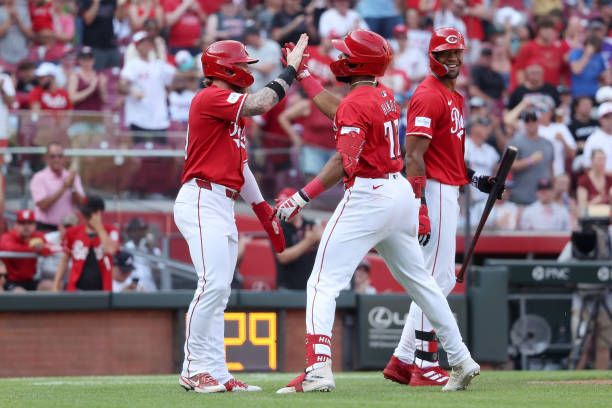In a move that has sent shockwaves through both the baseball and football worlds, the Cincinnati Reds have made a blockbuster trade that defies conventional sports boundaries. In a stunning twist, the Reds have acquired a $2300 million pass rusher from the Philadelphia Phillies, a transaction that merges the worlds of baseball and football in a way no one could have predicted.
The trade, finalized late last night, involves an unprecedented crossover of talent and finance. The Reds, traditionally known for their Major League Baseball prowess, have made a colossal investment by bringing on board a pass rusher from the Phillies, a team whose primary focus is, of course, baseball. The deal is reportedly valued at an astounding $2300 million, a figure that dwarfs typical sports transactions and has left fans and analysts alike scrambling to make sense of this landmark agreement.
The player at the center of this deal is a high-profile NFL pass rusher whose prowess on the field has made him one of the most sought-after athletes in football. Known for his explosive speed and formidable presence on the defensive line, this pass rusher has been a game-changer for his NFL team. His move to the Phillies, who are traditionally a baseball team, adds a layer of intrigue and speculation about the future of cross-sport contracts and the evolving nature of athlete roles.
The $2300 million valuation attached to this trade is a staggering amount, reflecting not only the pass rusher’s significant impact on the field but also the broader implications for sports finance. This deal reportedly includes not just the transfer of the athlete but also a complex package of endorsements, promotional activities, and potentially even crossover appearances in both sports. The financial intricacies of this transaction highlight the growing trend of blending sports entertainment and commercial value in unprecedented ways.
The Cincinnati Reds have expressed their enthusiasm for the deal, citing the unique opportunity it presents to enhance their brand and engage with a broader audience. Team officials are optimistic that the addition of such a high-profile athlete will bring a new level of excitement and visibility to the Reds, as well as create innovative marketing opportunities.
Meanwhile, the Philadelphia Phillies have commented on the trade with a mix of surprise and strategic foresight. Team representatives have indicated that the decision was made with a long-term vision in mind, focusing on how this deal could benefit the Phillies’ broader objectives, including fan engagement and cross-promotional strategies. The Phillies’ move to part ways with the pass rusher also suggests a shift in their operational approach, emphasizing a broader spectrum of sports entertainment and cross-industry collaborations.
This landmark trade is more than just a headline-grabbing event; it represents a significant shift in how sports organizations approach athlete value and cross-sport integration. The successful execution of such a deal could pave the way for more creative and unconventional partnerships between different sports, blending fan bases and maximizing commercial opportunities in ways that were previously unimaginable.
The integration of a pass rusher into a baseball team’s operations could inspire new strategies for team-building and fan engagement. It raises questions about the potential for other cross-sport trades and collaborations, which might become a trend in the future as teams look to leverage their assets in novel ways.
The Reds’ acquisition of a $2300 million pass rusher from the Phillies has set a new precedent in the world of sports trades. As fans and analysts digest the implications of this deal, one thing is clear: the landscape of sports transactions is evolving. This landmark trade may very well be the beginning of a new era in sports, where the boundaries between different types of athletic talent and financial value become increasingly blurred. For now, the sports world watches with bated breath to see how this unprecedented deal unfolds and what it means for the future of cross-sport collaborations.
